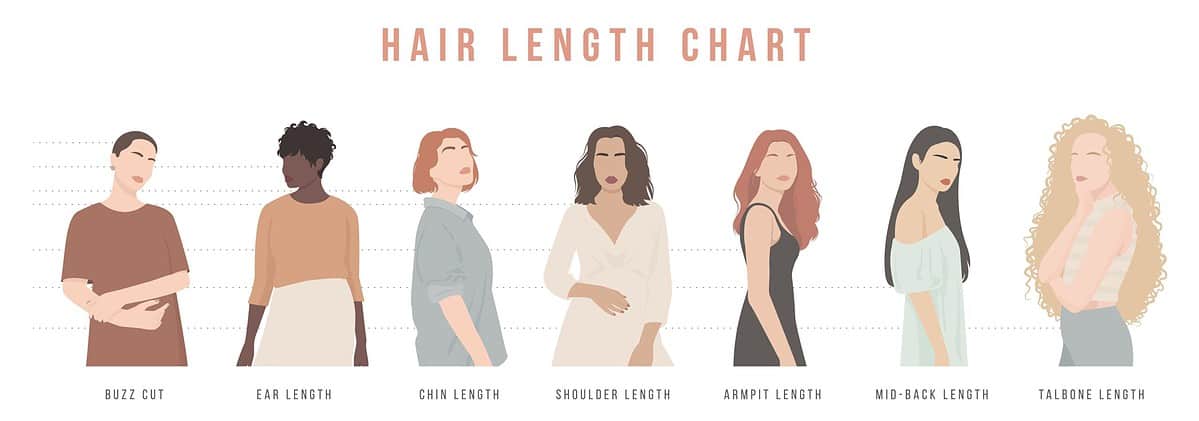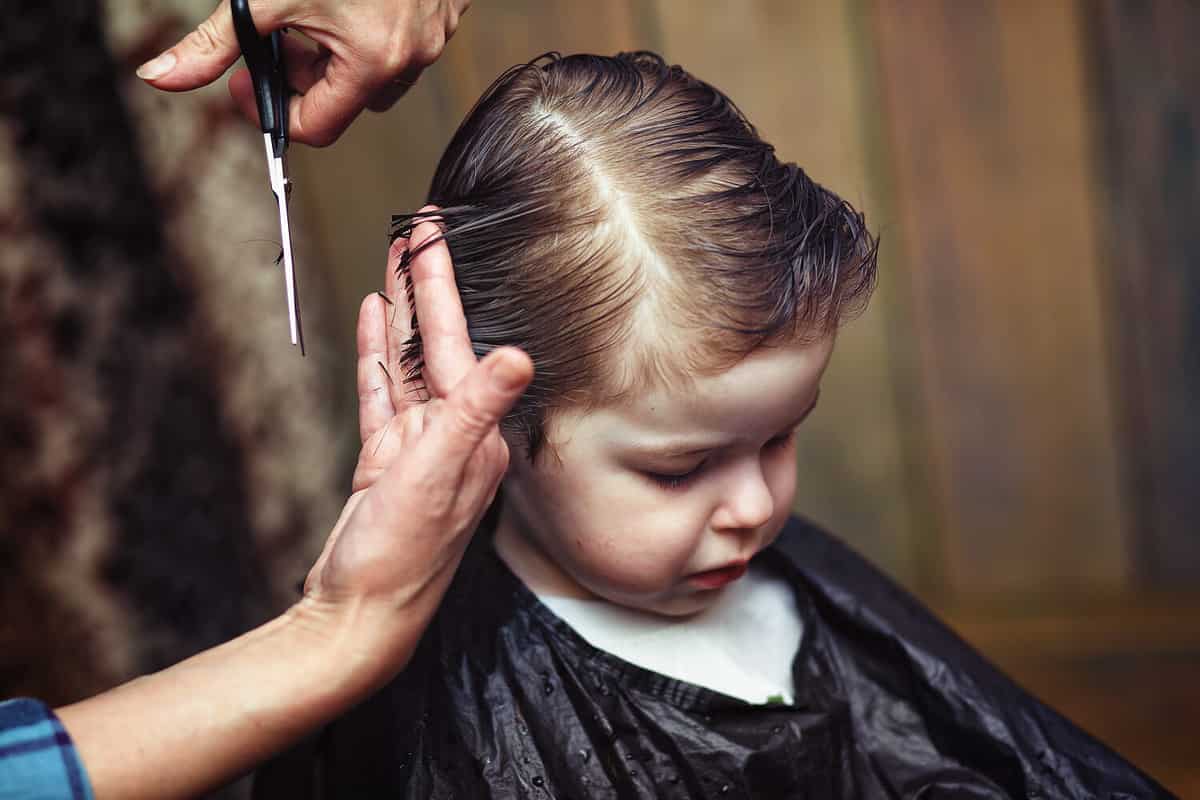When you head to the salon for a new hairstyle, part of leaving with the look you want is getting the description just right. Although there are different styles, cuts, and textures, part of deciding what you want your hair to look like is hair length. A hair length chart can be a helpful way to determine exactly what you want your new look to be.
If you’re unsure of what hair length or style you want, keep reading to find out about different hair textures and the terms to describe each hair length.

©subkontr/Shutterstock.com
How to use a hair length chart
You walk into the salon with a specific idea of what you would like your hair or your child’s hair to look like but leave disappointed. Sound familiar? It’s probably happened to all of us at least once. When we get a haircut or take our kids to get one, the stylist can’t read our minds, so if we don’t know how to describe what we’re looking for, we may end up with the wrong style in the end.
One aspect of this is hair length. When you incorrectly describe what length you’re looking for, it’s easy for the stylist to cut too much or too little. A hair length chart is a simple way to understand the different terms for hair length and get an idea of exactly what length you want. That way, you’ll know exactly what to ask for on your next trip to the salon.
Terms to Describe Different Hair Lengths
Choosing a hair length may seem simple, but there are so many varieties that it’s easy to mix them up. From ear length to chin length, there’s a term for each possible length that your stylist will understand. Here’s a look at each of the terms on the hair length chart:
- Buzz Cut
The buzz cut involves the stylist shaving the hair and often requires regular trips to the salon since it can grow out pretty quickly.
- Ear Length
Ear length is a popular term to describe many of the shorter haircuts. This term may include a pixie cut, which is sometimes cut above the ear.
- Chin Length
Chin-length hair reaches the chin and is considered a short haircut. It’s typically around 8 inches for straight hair but is 2-4 inches shorter for curly or wavy hair.
- Shoulder Length
Shoulder-length hair reaches your shoulder and is considered medium-length hair. Hairstyles that are shoulder length can be perfect for those who are trying to grow out their hair.
- Armpit Length
Armpit length is considered medium or long when it comes to hair length. You can add some layers to this type of cut for volume.
- Mid-back Length
Mid-back is considered long hair and great for curly or wavy hair textures. This is one of the most common long hairstyles.
- Tailbone Length
Tailbone-length hair is definitely long hair. With longer hair, you can usually wait more time between trims.
When you’re thinking about hair length, keep in mind the lengths are going to look different depending on the texture of your hair. If your hair is curly or wavy, it may look shorter but will lengthen when it’s wet or straightened.
What Length of Hair Is Considered Long?
You may have had long hair before or complimented someone with long hair. But what exactly is considered long hair? Although there’s not one specific definition of long hair, typically armpit length or longer is considered long hair. Based on the hair chart, armpit length, mid-back length, and tailbone length would be considered long.

©Photo Volcano/Shutterstock.com
Things to Consider before Choosing a Hair Length
When you're trying to figure out how to cut or style your hair, there are some things that may be helpful to consider before choosing a hair length. While you already have a specific style in mind, it's important to remember hairstyles and lengths look different on everyone, especially when it comes to these factors:
Hair Type
The type or texture of your hair is of the essential factors when it comes to determining the best hair length. While straight hair may be easier to fit in a variety of styles, curly hair often takes on a mind of its own. Keep in mind, curly and wavy hair will appear several inches shorter than straight hair.
Face Shape
Face shape plays a major role when it comes to which length or style looks best. While some face shapes look better with longer hair, other shapes are framed well by a shorter cut. This is why a hairstyle that may look great on someone else, might not be the best style to compliment the shape of your face.
Styling Choices
How your hair looks when you're leaving the salon probably isn't how it will look most of the time, so how you choose to style your hair is something to consider. If you have curly hair but the style or length you chose looks best when your hair is straight, consider whether you’re planning on regularly straightening your hair or not.
Difference between Straight, Wavy, and Curly Hair Texture
Your hair’s texture plays a significant role in how your hairstyle looks every day. It's amazing how many hair types and textures there are and how unique each person's hair is. To give you an idea of the different types of hair, here’s the difference between each texture:
Straight Hair
Straight hair is the easiest one to identify. This hair texture tends to have less volume and is easily styled even with different hair lengths. It’s also simple to determine the actual length because no part of it is curled. Many people with straight hair find it difficult to achieve another texture, even by using a curling iron to provide some volume.
Wavy Hair
Wavy hair is the texture between curly and straight. While it may have more volume than straight hair does, it doesn't have quite as much volume as curly hair. This hair texture often looks a little shorter than its actual length. Wavy hair usually works well with different lengths and layers.
Curly Hair
Curly hair is identified by the different coils, or curls, present. Hair texture, like many other physical features, is genetic. Curly hair itself is considered a dominant gene, which means if one parent has curly hair and the other has straight hair, you’re more likely to have curly hair.
Takeaway
Leaving the salon unhappy with your new style or your child’s style is never a good feeling. One way to ensure you get exactly what you're asking for is to use a hair length chart. The hair length chart shows seven different lengths and gives you a visual of what they look like. Remember that everyone is different and finding the right hair length means figuring out what works best with your unique hair type and texture.
The image featured at the top of this post is ©Ground Picture/Shutterstock.com.

